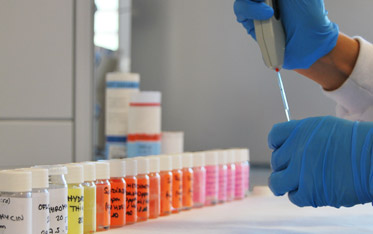This area of research seeks to provide a complete and efficient response to the problems and challenges related to water quality, particularly in the Mediterranean area. The assessment of water quality as it is defined in this area—considering chemical, microbiological, and ecotoxicological
quality—allows identification of the tools needed for the adequate management and preservation of water bodies.
The main objective of this area is to define the concentrations, fate and mechanisms of action of pollutants and pathogenic elements in natural and reused waters.
The most modern chemical, microbiological, and ecotoxicological analytical methods are being implemented to assess water quality and to examine the corresponding characteristics of surface waters, groundwaters, and treated water, the latter including both drinking and wastewater. Risk assessment of water pollutants is determined by analyzing the environmental impact of organic compounds in water bodies. Studies of the presence, diversity, and activity of microbes in the aquatic environment are another objective in this area.
Lines of research
The Water Quality Area's lines of research are:
AII1 Chemical contamination of water bodies
AII2 Pollutants in waste water
AII3 Quality and Microbial diversity
AII4 Ecotoxicological response of the biota to pollutants

Group leader

Mira Petrovic
Research Professor (ICREA)
mpetrovic@icra.cat
ICREA Research Professor, has a BsC in Chemical Engineering (1988), a MsC in Environmental Chemistry (1991) and a Ph.D. in Chemistry (1995), all from University of Zagreb, Croatia. Her main field of research concerns fate and behaviour of emerging organic contaminants, such as pharmaceuticals and endocrine disruptors during wastewater and drinking water treatment. Specific research lines include the study of biotic and abiotic transformation of emerging contaminants, the identification of transformation products and elucidation of transformation pathways, the study of occurrence and distribution of emerging contaminants in aquatic environment and environmental risk assessment.
